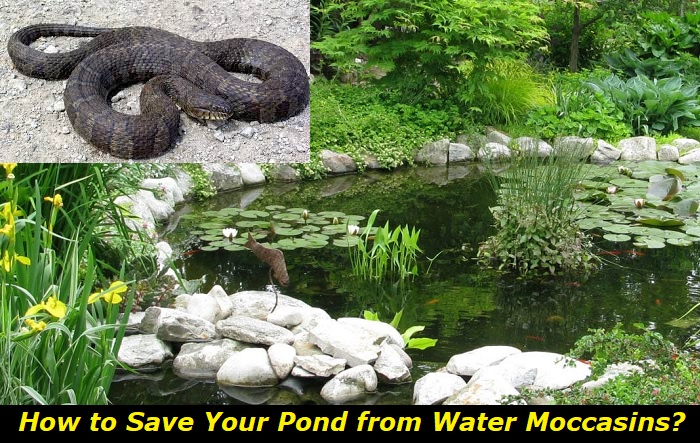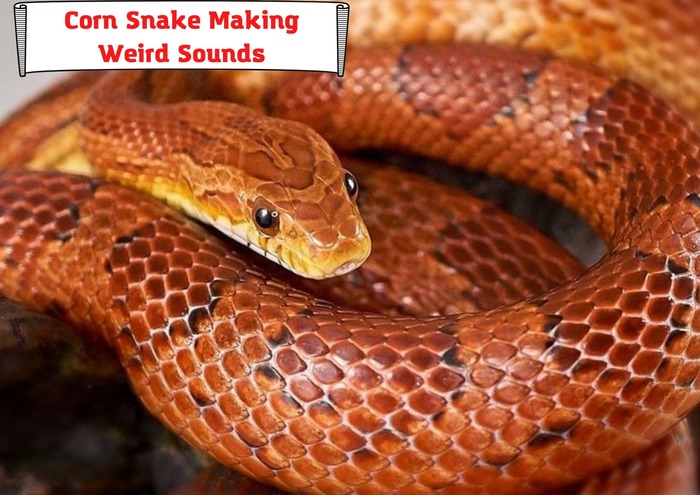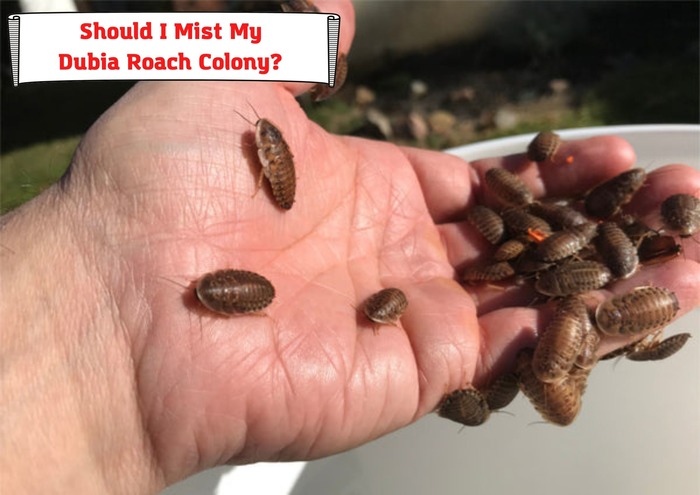No one wants to find a water snake in their pond. Last of all, a water moccasin. These highly adaptable venomous snakes are widely known as cottonmouths because they open their jaws to reveal a characteristic white coloration inside their mouths when threatened. Water moccasins have been known to invade ponds and feed on fish until there are none left.
These semi-aquatic pit vipers are so good at creeping into our habitats that people have created a laundry list of cute little nicknames for them. These include swamp lion, water mamba, stub tail, trap-jaw, water pilot, black moccasin, mangrove rattler, and gaper. Whatever you call it, most people freak out at the thought of sharing their pond with these well-meaning yet deadly vipers.

Unlike your fish, you do not have much to fear from the water moccasins because they are not known to attack humans unless provoked. Should you spot a water moccasin slithering around your pool, do not panic. Your best bet is to ignore it until you devise a solid plan. This article will help you do just that.
By the time you are done with this quick read, you will know everything you need about:
- How to identify the type of snake invading your pool
- How to prevent water moccasins from invading your pool.
- What to do when facing a water moccasin infestation in your pool
How to Differentiate Water Moccasins From Non-Venomous Water Snakes
Pond owners often confuse water moccasins with the non-venomous water snakes from the genus Nerodia. America has three different varieties of water moccasins. These snakes come in various colors: black, olive, banded brown, dark brown, and yellow.
Water moccasins are much larger and more muscular than your typical water snake. Their bodies are covered in ridged scales, and they can grow up to four feet long. Their blocky heads have prominent jowls punctuated by vertical cat-like pupils and dark stripes over each pupil.
Here are a few pointers to keep in mind when trying to identify whether the reptilian impostor in your pool is venomous or non-venomous:
- Venomous water moccasins are much thick and more muscular compared to slender and light non-venomous snakes. The non-venomous ones have tails that are long and distinctly thinner than the trunk of their body.
- Water moccasins have a blocky thick head that is wider than the neck. The moccasin’s head also has the heat pits from which the pit vipers derive their names. Their pupils are also slit-shaped, unlike water snakes which have round pupils.
- When threatened, water moccasins coil like their viper cousins and reveal their fangs in readiness to deliver the deadly bite. Threatened water snakes flatten their bodies and heads in an attempt to appear bigger. Unfortunately, this only makes them appear more like the deadly moccasins. Even water snakes flatten their heads; their width remains equal to or less than their necks. A water snake’s head will never be wider than its neck.
- Young water moccasins are brightly colored with distinct patterns adorned by a bright yellow tail tip used to lure prey.
Measures that will keep water moccasins out of your pond
Water moccasins are like any other pest. If you make your pond and its surroundings bleak for them, they will eventually stop coming around. Here are tried and tested methods that keep water moccasins and other snakes away from your inviting pond.
1) Snake Traps
Snake traps are the most effective method of containing a suspected water moccasin infestation. The traps will ensure the success of your other preventative efforts by containing any water moccasins present. Once you have trapped those already penetrating the habitat, you can direct your efforts to ensure the party does not continue.
Minnow traps are the most effective at capturing snakes. These tubular mesh structures have openings to let the snakes in but prevent them from getting out. Biting the trap using minnows or small rodents is recommended, then placing it on land or in your pond’s shallow waters.
Large glue traps are also effective but not recommended for capturing water moccasins because they are less safe than minnow traps. Glue traps prevent the snake from moving effectively but do not protect you from getting bitten. Captured snakes can be released from glue traps by pouring natural oil.
Once the snake is captured, you are faced with killing it or releasing it into the wild. Depending on where you live, killing some or all types of snakes may be illegal. Some regions also outlaw the relocation of snakes. Consult your local wildlife office to determine the best way to deal with captive moccasins.
Should you choose to release the snake, ensure you do not release it close to your pond because it will likely find its way back. If you had rather not play cat and mouse with a venomous snake, or simply do not have to stomach to strike the deadly blow, hiring a professional reptile handler to rid your pool of the pesky moccasins is advisable. Professional reptile handlers possess special tools that make the take of capturing, killing, or releasing snakes efficient and cruelty-free.
2) Design Fish-Hiding Spots in Your Pond
Ponds that are well-designed often have plenty of hiding spots for the fish. These hiding spots are often in the form of natural vegetation, underwater overhangs, fish shelters, and underwater logs. These hiding spots are good for much more than increasing your pond’s curb appeal. They ensure that the easy prey in your pond does not lure in any water moccasins passing by.
Should the snake notice the fish and decide to go at them anyway, the hiding spots will offer your fish a fighting chance. Water moccasins are not known for their patience. They will quickly tire of the hidey holes and move on to prey with nowhere to run or hide.
3) Use Snake Deterrents
Pond owners rely heavily on snake deterrents to warn water moccasins that they better try their luck elsewhere. Various natural scents are known as snake deterrents. A quick online search or visit to the right hardware store will offer many options.
The urine of foxes, badgers, mongooses, and minks is known to send a keep-off signal to snakes passing by. The urine of these animals repels snakes because they are too smart to wander into their predators’ territory. If you have some money to spare, why not spring for the king snake musk, which some pond owners swear works better than the urine samples?
Once you have selected your preferred snake deterrent, pour it liberally around your pond to ensure no snake makes itself at home under your nose. Nothing stops you from using more than one of these deterrents for maximum effect.
People who avoid handling urine and snake musk can stop worrying because the alternative is less gross. The USDA vouches for natural blends of clove oil, cinnamon oil, or eugenol as highly effective (and significantly less weird) means of repelling snakes. These could disrupt the chemosensory systems snakes rely on hunt prey without negatively impacting the natural ecosystem.
4) Use a Pond Aerator
Water moccasins prefer still waters. Using a pond aerator to agitate your pool’s water is another way to discourage uninvited reptilian visitors. If running an aerator does not appeal to you, consider incorporating a waterfall or fountain to ensure continuous water disturbance. Turbulent waters can reduce visibility and ensure your fish are not sitting ducks should a water moccasin slither into the pool.
5) Maintain a Yard Maintenance Schedule
An untidy yard with tall, unkempt grass or one littered with leftover grass, wood piles, leaf piles, and ground holes is very inviting for snakes. Maintaining a regular cleaning schedule ensures the area around your pond is free of warm hiding spots. Any holes that foxes, mice, or groundhogs create should be filled up with dirt to avoid inadvertently creating a furnished snake den for a lucky water moccasin to move into.
6) Introduce Snake Repelling Plants
If you are lucky enough to worry about snakes in your pool before they become a problem, these plants will ensure you do not lose sleep worrying about what is crawling around in your yard. Pond owners have gushed about how effective lemongrass, wormwood, garlic, and marigold are at keeping snakes at bay.
7) Introduce Natural Water Moccasin Predators
This method should be carefully considered because you last want to introduce a predator that will turn on your fish and the water moccasin. The most practical water moccasin predators to introduce in or around a pond include largemouth bass and opossums if your pond has small fish like koi and goldfish.
Opossums are known for roaming backyards uninvited, but constructing a possum box or putting out some cat food should do the trick if you want to attract them. Possums are the best predator option for dealing with water moccasins because they go the extra step and eat small rodents and ticks. They also don’t pose a significant threat to your fish because they are often too lazy to hunt highly mobile prey.
- Pacman Frog Looks Deflated – What’s Wrong and What to Do? - August 7, 2023
- How to Put Snake Back in Cage after Feeding? Important Concerns - July 31, 2023
- Repta Boost: Instruction, Considerations, Ways to Use - July 24, 2023



